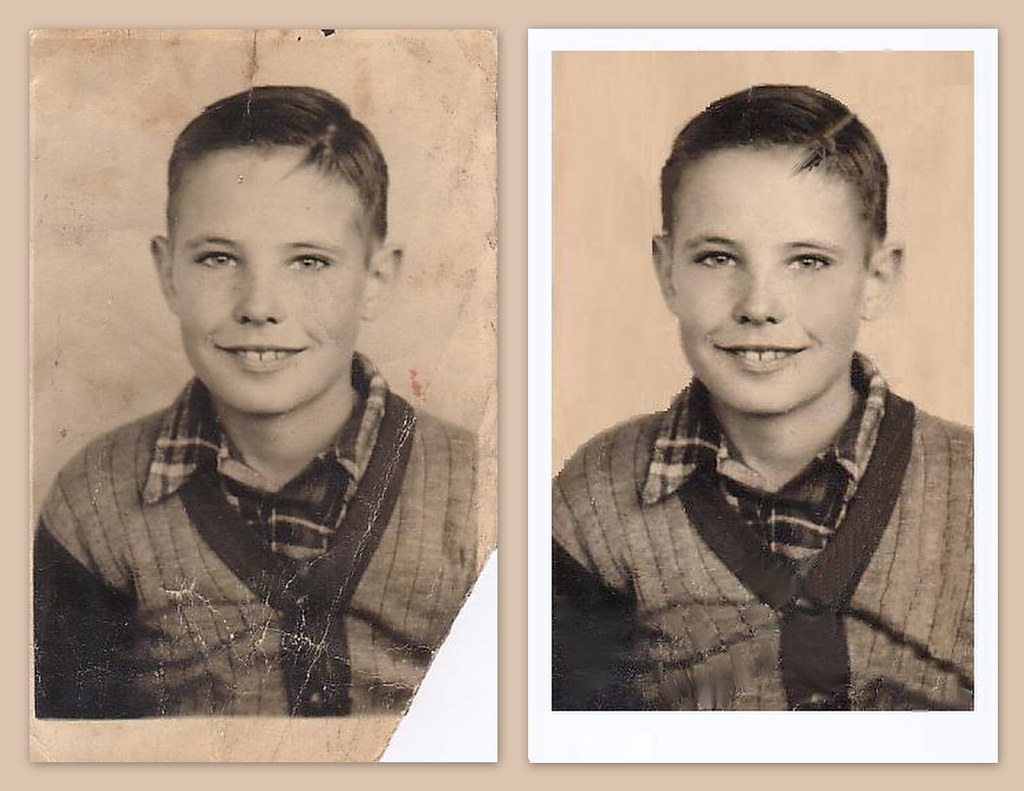Throughout the history of photography, retouching has played a significant role in the industry. In the past, retouching was done manually with paintbrushes and chemicals, but with the advent of digital technology, it has become much more accessible and efficient. Today, retouching is an integral part of professional photography, allowing photographers to create stunning images that captivate viewers. According to a survey, 96% of professional photographers use retouching techniques in their work. This shows the immense importance and widespread use of retouching in the field of photography.
Table of Contents
ToggleThe Art of Retouching in Photography
Retouching is an essential aspect of photography that involves enhancing and perfecting images through post-production techniques. It is a meticulous process that allows photographers to transform their images, improving their quality and aesthetics. Retouching involves making adjustments to various elements of a photograph, such as color, light, and composition, and removing imperfections or distractions. In this article, we will delve into the different dimensions of retouching in photography, exploring its techniques, tools, and significance.
Understanding the Importance of Retouching
Retouching plays a crucial role in photography as it allows photographers to achieve their creative vision and communicate their message effectively. It enhances the overall visual appeal of an image, making it more captivating and eye-catching. Whether it’s a landscape, portrait, or product photograph, retouching helps to refine the image, ensuring it meets the desired standards and conveys the intended emotions.
Retouching also allows photographers to correct any imperfections or errors that may occur during the shooting process. It provides an opportunity to fix issues such as blemishes, skin discoloration, unwanted reflections, or distracting elements that may detract from the subject or the composition. By removing these distractions, retouching helps to create a more polished and professional-looking image.
Furthermore, retouching can also be used as a storytelling tool, allowing photographers to enhance the narrative and convey a specific mood or atmosphere. Through creative retouching techniques, photographers can manipulate elements of an image to create a desired effect, whether it’s adding dramatic lighting, altering the colors, or emphasizing certain details. Retouching gives photographers the freedom to experiment and push the boundaries of their creativity.
In summary, retouching is essential in photography as it helps photographers achieve their artistic vision, correct any imperfections, and enhance the overall visual impact of an image. It is a powerful tool that allows photographers to transform their photographs into compelling visual stories.
Techniques and Tools for Retouching
Retouching involves using various techniques and tools to enhance and manipulate images. Here are some commonly used techniques and tools in retouching:
1. Skin Retouching
Skin retouching is a technique used to improve the appearance of skin in portraits or beauty photographs. It involves smoothing out imperfections, reducing blemishes, and enhancing skin tone while preserving the natural texture. Tools such as healing brushes, frequency separation, and dodge and burn techniques are commonly used for skin retouching.
During skin retouching, it is important to maintain a balance and avoid overdoing it, as excessive retouching can lead to an unrealistic and unnatural appearance. The goal is to enhance the subject’s features while keeping the image looking natural and authentic.
Furthermore, advanced retouching techniques can also be used to address more complex skin issues, such as scars, wrinkles, or discolorations. These techniques require a high level of skill and precision to achieve realistic and pleasing results.
2. Color Correction
Color correction is a fundamental aspect of retouching that involves adjusting the color balance, saturation, and tones of an image. It allows photographers to enhance the overall color harmony, correct white balance issues, and create a desired mood or atmosphere.
Color correction can be done using various tools and techniques such as Curves, Levels, Hue/Saturation, and Color Balance adjustments. These tools enable photographers to fine-tune the colors and achieve the desired look.
Additionally, color grading techniques can also be applied to create a specific aesthetic or visual style. This involves manipulating the colors to create a unified and cohesive look throughout a series of images or to evoke a particular emotion.
3. Object Removal and Background Cleanup
Object removal and background cleanup are essential techniques in retouching that involve removing unwanted elements or distractions from an image. This could include removing dust spots, sensor spots, power lines, or any other elements that may detract from the main subject.
Tools such as clone stamps, healing brushes, and content-aware fill are commonly used for object removal and background cleanup. These tools allow photographers to seamlessly remove unwanted elements while maintaining the overall integrity of the image.
In some cases, background replacement may also be required to enhance the composition or change the context of the image. This technique involves removing the existing background and replacing it with a new backdrop or environment.
The Ethics of Retouching
Retouching raises important ethical considerations in the field of photography. While retouching can be a powerful tool for enhancing images, it is crucial to maintain transparency and authenticity in the representation of reality.
When retouching images, it is important to strike a balance between artistic expression and accurate representation. Overly manipulating images to the point of distorting reality can mislead viewers and undermine the integrity of the photograph.
Photographers and retouchers should adhere to ethical guidelines that prioritize honesty and transparency. Disclosing the use of retouching techniques and being transparent about the extent of alterations made to an image is crucial in maintaining the trust and integrity of the photographic medium.
Furthermore, it is essential to consider the social implications of retouching and avoid perpetuating unrealistic beauty standards or promoting harmful body images. Retouching should be used responsibly and with consideration for the impact, it can have on the perception of beauty and self-esteem.
Exploring the Creative Possibilities of Retouching in Photography
In addition to its technical aspects, retouching offers photographers endless creative possibilities. It allows photographers to bring their artistic vision to life and create images that evoke emotions, tell stories, and captivate viewers.
Manipulating Light and Shadow
Retouching enables photographers to manipulate light and shadow in their images, creating dramatic effects and emphasizing certain elements. By using techniques such as dodging and burning, photographers can selectively lighten or darken areas of the image, enhancing contrast and creating a sense of depth and dimension.
This manipulation of light and shadow allows photographers to highlight specific details, direct the viewer’s attention, and create a desired mood or atmosphere.
Artistic Editing and Creative Composites
Retouching enables photographers to unleash their creativity by creating artistic edits and composite images. By combining multiple photographs or elements, photographers can create unique and imaginative compositions that go beyond the limitations of reality.
Photographers can blend different images seamlessly, creating surreal or dreamlike scenes, constructing narratives, or conveying abstract concepts. This opens up endless possibilities for creating visually striking and thought-provoking images.
Restoring Old or Damaged Photographs
In addition to creative retouching, the art of retouching is also used in restoring old or damaged photographs. Retouching techniques can be used to repair tears, scratches, faded colors, and other imperfections, bringing old or damaged photographs back to life.
This restoration process not only preserves cherished memories but also provides an opportunity to honor and appreciate the history captured in those photographs.
Printing and Presentation Enhancement
Retouching is also crucial in the final stages of image production, especially when preparing images for printing or presentation. It involves optimizing the image for the specific medium, ensuring that the colors, contrast, and sharpness are accurately represented.
Additionally, retouching can also involve fine-tuning the composition, cropping the image, or adding borders to enhance the overall presentation and visual impact.
In conclusion, retouching in photography is a multifaceted art form that involves enhancing and perfecting images. It allows photographers not only to correct imperfections and enhance the overall visual appeal but also to explore endless creative possibilities. As with any art form, ethical considerations are important to ensure transparency and authenticity in the representation of reality. Retouching is a powerful tool that, when used responsibly and creatively, can elevate photographs to new heights.

Understanding Retouching in Photography
Photography retouching refers to the process of enhancing and modifying images using various techniques and tools. It is a crucial aspect of professional photography, allowing photographers to create visually appealing and polished final images.
Why is retouching necessary?
- Improves overall image quality by removing imperfections and blemishes
- Enhances skin tone and texture
- Adjusts exposure and color balance
- Removes distracting elements from the background
How is retouching done?
- Using photo editing software like Adobe Photoshop
- Applying techniques like spot healing, clone stamping, and frequency separation
- Masking and layering to achieve desired effects
Retouching plays a vital role in enhancing photographs to their full potential and meeting the professional standards expected in the photography industry. It requires technical skill, an understanding of composition, and an eye for detail to create stunning, realistic, and visually captivating images.
To sum up, retouching in photography refers to the process of enhancing and editing images to achieve a desired look. It involves using various techniques and software to manipulate the photo’s appearance, such as adjusting colors, removing imperfections, and enhancing details.
Retouching allows photographers to create stunning and visually appealing images by correcting flaws, improving composition, and emphasizing certain elements. It is an essential part of modern photography and is used in various genres, including fashion, portrait, and commercial photography. While retouching can enhance images, it should be done ethically and responsibly, maintaining the integrity and authenticity of the original photograph.
What does retouching mean in photography?
Retouching in photography refers to the process of enhancing or altering an image using various editing techniques. It involves making adjustments to the colors, tones, textures, and overall appearance of a photograph to improve its visual appeal or convey a specific message. Retouching can be done using software like Adobe Photoshop or Lightroom, allowing photographers to manipulate and enhance their images in a non-destructive manner.
Retouching can involve simple adjustments like adjusting exposure, contrast, or sharpness, or more complex edits such as removing blemishes, wrinkles, or unwanted objects from the image. It can also include advanced techniques like skin smoothing, body reshaping, or background replacement. The goal of retouching is to create a final image that reflects the photographer’s artistic vision and meets the desired aesthetic or commercial requirements.
Why is retouching important in photography?
Retouching plays a crucial role in photography for several reasons. Firstly, it allows photographers to correct any imperfections or flaws that may be present in the original image. This can include removing distractions, enhancing colors, or improving the overall composition. By retouching, photographers can ensure that their images accurately represent the subject and convey the desired message or emotion.
Secondly, retouching can help photographers achieve a specific style or look in their images. It allows them to enhance certain elements, such as emphasizing textures or creating a particular mood through color grading. Retouching also offers creative freedom, enabling photographers to manipulate the image to match their artistic vision or meet the requirements of a client or project.
Lastly, retouching is essential in commercial photography, where images often need to be polished and perfected for advertising or marketing purposes. It can involve product retouching, where the appearance of items is enhanced to make them more appealing to potential buyers. Additionally, retouching is common in portrait photography, where it can be used to smooth skin, whiten teeth, or enhance features, creating a more flattering and professional result.
What are the common retouching techniques used in photography?
There are various retouching techniques used in photography, depending on the desired outcome and the photographer’s style. Some common retouching techniques include:
- Skin retouching: This technique involves smoothing out skin tones, and reducing blemishes, wrinkles, or other imperfections while maintaining a natural appearance.
- Color correction: Color correction is used to adjust and balance the colors in an image, ensuring accurate and pleasing tones.
- Exposure and contrast adjustments: These techniques involve fine-tuning the brightness, highlights, shadows, and contrast levels of an image to enhance its overall tonal range.
- Background removal or replacement: This technique allows photographers to eliminate distracting elements from the background or replace it entirely with a different scene or environment.
- Object removal or addition: By using advanced retouching techniques, photographers can remove or add objects to an image to improve its composition or storytelling.
These are just a few examples of the many retouching techniques available to photographers. The specific techniques used can vary depending on the photographer’s style, the subject matter, and the desired outcome of the image.
Is retouching considered unethical or deceptive in photography?
Retouching in photography has been a subject of debate when it comes to ethics and deception. While some argue that extensive retouching can create unrealistic standards of beauty or misrepresent reality, others believe that it is a legitimate artistic tool and a form of self-expression.
It is important to note that the extent of retouching and its ethical implications can vary depending on the context. In photojournalism or documentary photography, where accuracy and truthfulness are crucial, excessive retouching that alters the reality of the image is generally considered unethical. However, in commercial or fashion photography, where the goal is often to create visually appealing images, retouching is more commonly accepted.
Ultimately, the ethical responsibility lies with the photographer to maintain transparency and disclose any significant alterations made to an image. Photographers need to establish their ethical boundaries and ensure that their retouching practices align with their values and the expectations of their audience or clients.
How can I learn retouching techniques in photography?
Learning retouching techniques in photography requires a combination of practice, experimentation, and education. Here are a few ways you can start learning:
- Online tutorials and courses: There are numerous online resources, tutorials, and courses available that can teach you various retouching techniques. Websites like Udemy, Lynda, and YouTube offer a wide range of video tutorials to help you get started.
- Books and guides: There are many books and guides available that provide step-by-step instructions and insights into different retouching techniques. These resources can be beneficial for those who prefer a more structured and in-depth learning experience.
- Practice on your images: One of the best ways to learn retouching is by practicing on your images. Start with simple adjustments and gradually move on to more complex techniques. Experimentation and trial-and-error will help you develop your skills and artistic style.
- Workshops and classes: Attending workshops or classes conducted by experienced photographers or retouchers can provide valuable hands-on learning opportunities. These sessions often include demonstrations, feedback, and guidance to help you improve your retouching skills.
Remember, learning retouching is an ongoing process, and it takes time to master the various techniques. Patience, persistence and a willingness to learn from your mistakes are key to becoming proficient in retouching.










